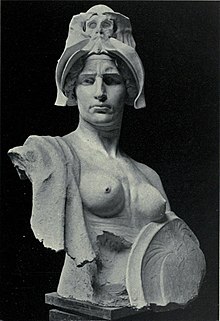Bellona
In Roman mythology, Belona was the goddess of war (in Latin, bellum), daughter of Jupiter and Juno, sister or wife of Mars. The Greek equivalent of her would be Enio (horror) and she becomes more popular than Mars (the Ares equivalent) there.
Believed to be one of the numen deities of the Romans (no particular mythology and possibly of Etruscan origin) and many assume that he would have been the original Roman deity of war, preceding the identification of Mars with Ares. Her name is directly related to the modern word "belligerent" (literally, "one who is at war"). In art, she is depicted with a helmet, breastplate, sword, spear, and torch.
Politically, all meetings of the Senate on foreign warfare were held in the Temple of Bellona (Templum Bellonae) on the Palatine Hill (Collis Palatium), outside the Pomerium (pomerium). This temple was built in 296 B.C. C. and burned in 48 d. C. The festival of Bellona was celebrated on June 3.
The priests of Bellona were known as belonarios.
Representations
She is depicted driving a chariot, with a torch, sword or spear in hand, wearing a helmet and breastplate.
Belona was portrayed since the Renaissance by painters like Rembrandt or Rousseau and sculptors like Rodin. She appears in the well-known sculpture of La Marseillaise by François Rude.
Currently there is a group of the Carthaginian and Roman festivities of Cartagena, the Extraordinarii Shock Forces, which have adopted Bellona as a protective goddess, representing her who incarnates her every year with a helmet, shield and lance.




